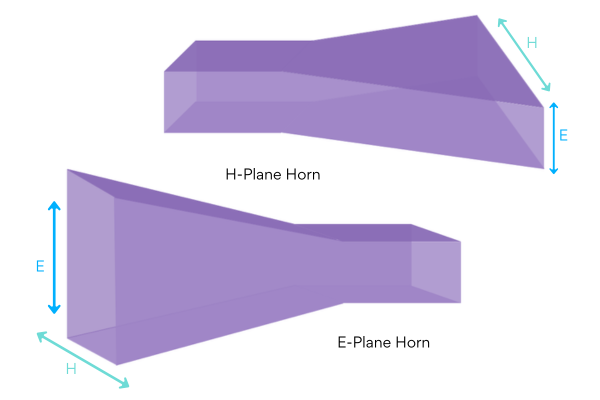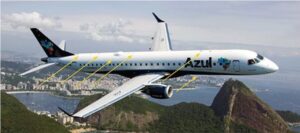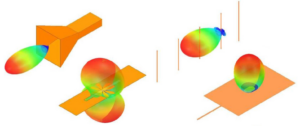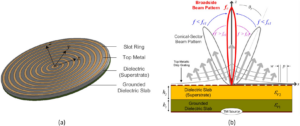Starlink primarily operates in the Ku-band at 12 to 18 GHz and the Ka-band at 26.5 to 40 GHz, optimizing global internet connectivity.
Ku-band Usage
In order to provide a secure connection between its orbiting satellites and user terminals on Earth, Starlink uses the Ku-band. Typically, the Ku-band can be defined as a frequency range within 12-18 GHz. Owing to this technology, millions of everyday internet users are guaranteed a stable and high-speed internet connection. For instance, in a rural household where the regular broadband technology may be unavailable, Starlink user terminals are connected via the 14 GHz frequency within the Ku-band, enabling all devices to stay connected. In the meantime, the technology enables households to support a broad spectrum of activities, ranging from video streaming in HD quality to joining online video calls without an appraising delay.
The choice of the Ku-band as the frequency range of user terminals is associated with a rational decision on Starlink’s part. On the one hand, higher frequency bands, such as the ones within the Ka-band, are superior in their broader bandwidth. On the other hand, however, they also run the risk of being affected by weather changes, particularly by such challenging weather phenomena as heavy rain or extremely dense clouds. As a result, choosing the Ku-band ensures fewer service disruptions for the users, which is a critical consideration in areas where such weather events are common.
In light of the comparisons between Starlink’s use of the Ku-band and the service of other satellite service providers, the former is substantially superior. Under the same circumstances, such as the 12 GHz band, Starlink users are likely to have a faster download speed level. To be more specific, download speeds for Starlink users in the 12 GHz band can reach over 100 Mbps, while the analogous level in old satellite technologies presents a 25 Mbps rate.
The Ku-band facilitates the accomplishment of internet access goals. In areas and countries that have previously had no real access to stable and fast internet, such technologies as Starlink can vary in its ability to provide website services, excluding those that require a fast and uninterrupted internet connection even in the most remote locations, such as online education platforms or telemedicine applications.

Ka-band Usage
For Starlink satellites and ground stations, the company relies on the Ka-band, which is defined as operating in the 26.5 – 40 GHz frequency range. Higher frequencies are a key aspect of enabling backhaul internet traffic between the ground and orbiting infrastructure because they provide the backbone of the entire network. In this way, high-capacity operations are possible as a result of the Ka-band frequencies between satellites and ground stations that allow the management of a vast and far-reaching network. The benefits of using the Ka-band are related to the high speeds and capacities to transmit data when compared to lower bands.
In a heavily populated urban area, such as New York City, 30GHz Ka frequency can be used to support UHD video streaming and the use of cloud computing platforms that require high data throughput. There are also various downsides to using the Ka-band, such as greater susceptibility to signal attenuation due to poor weather conditions. Starlink’s ground station placement and technology avoid such issues, as they can dynamically control the power and frequency of signals to maintain consistent service throughout the day.
Over the course of a day, numerous thunderstorms could affect the signal at the station, potentially dropping the signal, but this downtime would not be significant, and the signal would be reestablished shortly afterward. In terms of practical application, the Ka-band significantly outperforms traditional satellite systems in high-density settings, as the download speed in a practical setting for the former can reach 200 Mbps while the latter struggles to maintain 50 Mbps.
Frequency Allocation
Starlink’s frequency allocation within the Ku and Ka bands is a part of the company’s overall strategy to optimize its satellite internet service performance and reliability across regions and scenarios. The allocation of these frequencies is part of a deliberate plan that takes both the technical requirements of satellite communications and the differing legal environments of various countries into careful account. From a technical perspective, it may be understood in the following terms.
The use of the range in the Ku-band from 12 to 18 GHz in Starlink’s technology is essential for direct end-user access. It is ideal for broadcasting down to the ground as direct-to-consumer services for both stationary and mobile users. In this way, all regions may be guaranteed to stay covered and connected to the internet. One such example of users that benefit from this frequency allocation is a family that lives in a rural area in North America.
They are able to enjoy such high-speed internet access only due to their favorable position relative to the satellite signal. Traditionally, the use of fiber-optic cables is cost-prohibitive, as the fixed cost of laying the cable to a rural area and distributing it to individual houses is the same as in the case of urban areas, except that there is a smaller population to share the cost. This frequency use allocation enables such scenarios and many more.
In the meantime, the backbone of the communications between satellites and ground stations is managed as part of the 26.5-40 GHz range of the Ka-band and higher frequency bands. It enables a specific Central European business most efficiently due to the nature of the higher frequency that allows greater data transmission volume. Metropolitan businesses that rely on cloud computing and data transfers form the basis of this scenario, and they benefit the most from the reduced latency and the improved data transfer potential of up to 200 Mbps Alashi SMA.

Bandwidth and Capacity
It has already been established that Starlink satellites operate primarily in the Ku-band range (12 to 18 GHz) and Ka-band range (26.5 to 40 GHz). Furthermore, the use of these high-frequency bands directly affects the bandwidth and capacity provided by the service. As such, they are also the most important aspects of the way this system functions. Firstly, the major advantages of using these high-frequency bands for data transmission have been established – both Ka and Ku bands allow for particularly large bandwidth.
The case with the Ka-band and its even higher frequency is particularly simple – high-frequency radio transmissions simply allow for more data bits to be sent simultaneously. At a sufficient scale, this can be used to achieve speeds exceeding 200 Mbps. The implications of such speed and capacity are significant and have been analyzed before – high-definition video streaming, massive multiplayer online gaming, cloud-based real-time data analytics, each representative of some of the heaviest dataflow applications, can be operated perfectly smoothly.
It is demanded by a software development company in a large city – located within a reasonable range of a satellite, it can easily upload and download large codebases with history. More importantly, cloud-based development makes it important that the servers are properly cloud-based, not just accessed over LAN, which would limit the use of this capacity since there are not that many servers of this kind. The difference in time consumed by such operations is also relevantly large, falling from several hours needed to download and reupload the entire base to virtually no time needed to simply update the changed files.
The Ku-band requires some advantages compared to the Ka-band, which can be identified based on the technical characteristics of the system. Firstly, the data itself suggests that its performance is lower in terms of offered bandwidth – however, the maximum speed increases do not seem to be particularly important for any purpose. The increase to more than 100 Mbps of low demand is more than sufficient for any residential use. Families will be able to make HD video calls, stream their television shows in 4K or more, comfortably use their home office system, and have their children have their skype calls streamed in the next room without even noticing a drop in speed. At its worst, the speed will always remain firmly within the comfort zone, with most users enjoying a stable 100 Mbps connection.
Dual-band Technology
Starlink’s employment of both Ku-band, 12 to 18 GHz, and Ka-band, 26.5 to 40 GHz dual-band technology, is effective in optimizing the network and ensuring users get the best possible experiences in various scenarios. It allows the system to provide the highest speed and reliability in terms of internet connection stability by dynamically switching between two bands based on the signal condition, environmental factors, and user requirements. A typical scenario where such technology would be beneficial is remote and rural work. For example, suppose one is a professional living in the rural countryside and working from a home office. They need to stay connected all day to use video conference software for their meetings and send heavy files. With the technological support of the dual-band system, the user’s terminal would automatically switch to the Ku-band in case of heavy raining.
This is due to the Ku-band’s lower frequency, which has fewer difficulties traversing an atmospheric obstacle such as rain from above. This would not require manual tuning or input from the user, meaning there would be no interruption in their work or the internet’s reliability. Meanwhile, in an urban environment, the peak demand for high-speed internet would be staggeringly high. By using the dual-band technology, Starlink can ensure efficient load balancing where, during the evening or early afternoon, when most people would require the internet for work, personal streaming, and gaming, the system would support the high capacity by also pushing the data through the Ku-band, which would force some data load away from the Ka-band and load the Ka-band with near-constant rates throughout the day.
Because all data requests are perfectly balanced in this manner, including high-intensity business operations, the overload and the resulting latency is reduced. This would be enabled by the advanced phased array technology found in both Starlink’s satellites and user terminals, which allows the system to quickly shift to the best available frequency. This not only allows the network to operate at the highest efficiency for all kinds of users but also provides users with internet that dynamically adapts and adjusts to their demands as well as environmental factors, such as rain and wind. In effect, the fastest of the versions would still have to have an upper cap of up to 200 Mbps for downloads.
Beamforming and Phased Arrays
Beamforming and phased array techniques provide starlink systems with faster and more accurate ways of delivering satellite internet services throughout the globe. Beamforming is a technique that enables starlink systems to focus a wireless signal on a specific receiving device. This is different from the traditional broadcast transmission method of having the signal spread to all other devices connected to the system. Beamforming increases the signal strength, improving the speed and efficiency of the internet service. For example, when starlink system delivers internet services to a suburban community and the residents are spaced out, beamforming ensures that the system delivers the signal purely and accurately to each individual user terminal. Each household will receive the signal even if they are kilometers apart from each other.
Phased arrays, on the other hand, are focused grouping of antennas used for steering signals in one or more directions. The antenna arrays direct multiple beams by exciting multiple elements in the array to steer the beam in a particular direction. The system needs to endow the beams with the capability to follow and cover the field of view of the satellite or the user terminal. A good example is a ground terminal on earth which needs to talk to a user terminal that is moving in a car, the beam should follow the car throughout its moves. By not moving physically, the antenna arrays can adjust the phases from each antenna dynamically to follow the car. On the side of the vehicle, the phased array technology in the user terminal also adjusts the beams especially when going through urban built area where signals may be absorbed or reflected.
The beamforming and phased array technology also help the starlink systems to utilize their spectrums effectively. The wireless signals from the orbiting satellites cover large areas and can affect the operation of other starlink satellites. Beamforming and phased arrays reduce the problem and enhance spectral efficiency because of the focused narrow beams of the signals. Also, starlink systems use varying beamforming arrays with decreased scanning angles with the main lobe steered to point further down the earth’s surface. The system changes the beam directions dynamically to ensure the effective use of the spectrum. Through doing, the system gains the ability to allocate bandwidth to specific areas and users when necessary. The internet speeds may vary but are known to average between 100 Mbps and 200 Mbps. The high speed means that the systems can handle vast networks and still maintain the same high-quality signal effect.







